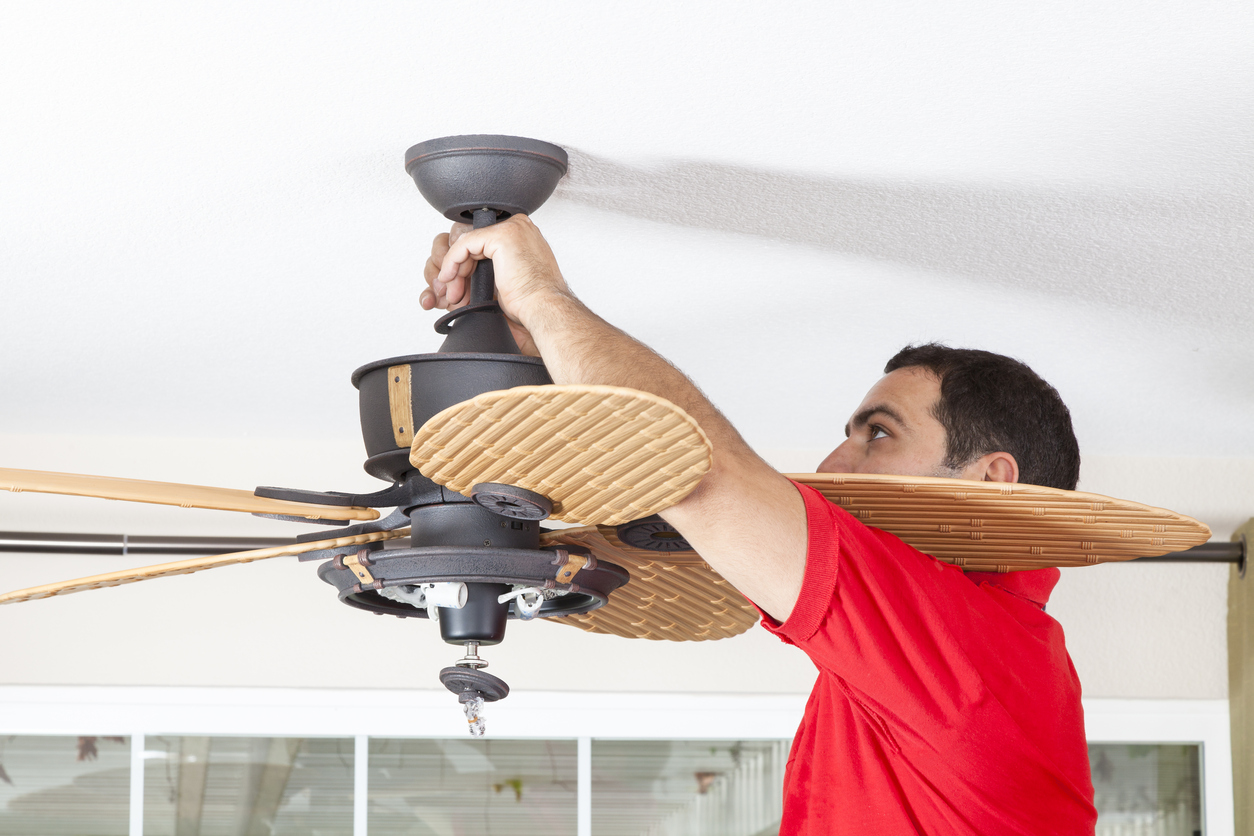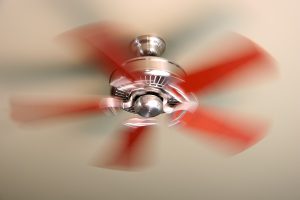
Do you leave your ceiling fans on even when you aren’t in the room? Some experts argue that ceiling fans aren’t doing you any favors if left on when no one is home.
aren’t doing you any favors if left on when no one is home.
Fans are a great way to cool down because they evaporate sweat. When air moves across the surface of your skin, it helps to evaporate sweat which cools the body. Carl Seville claims that, unless you can feel that breeze on your skin, ceiling fans are evil: “I am surprised at how few people understand the basic concept of fans — that they make you feel cool due to the movement of air across your skin. The same way a breeze cools you off, a ceiling fan can make you feel cooler, but only if you are close enough to it to feel the air blowing on you,” he says.
“If you can’t feel it, it isn’t doing any good. That’s why it is pointless to have a fan on when nobody is in the room; then it is just generating heat from the motor, which is why they are evil — they are heating when you want cooling.”
While it’s true that fans work through evaporative cooling, they also provide a source of convective cooling by moving out warmer air and drawing in cooler air. That means it is replacing hot, humid air with cooler, drier air.
So the answer to whether turning on your ceiling fan will help is: It depends…
- If it is too humid, turning on the fan won’t help because it won’t evaporate the sweat from your skin.
- Check the efficiency rating to see how much air is moved around per watt of power to see if a fan will save you money.
- Bigger fans are always better.
- Turning fans on to a slower setting is more efficient.
- If you have an AC on, a fan won’t save you money. The theory is that you will be able to turn up the thermostat if there is a breeze from the fan, but there is no data to support this theory. You will have to consciously turn up the thermostat when you turn on the fan. The new smart thermostats can be linked to some fans to do so automatically.
- For every degree you raise your thermostat, you save 5% on energy. From Big Ass Fans: “If each home thermostat was raised 6 degrees, we would reduce carbon emissions by 78 billion pounds, the equivalent of taking 3.2 million homes off the grid for a year.”
- Be sure to change the rotation direction for summer and winter. To feel the air moving the blades or a ceiling fan need to be pushing the air down. Conversely in the heating months a ceiling fan, with the blades pushing air up can push the warmer air at the ceiling to the walls and down. This also pulls cooler air at the floor level up off the floor making the room more comfortable in the heating months.
